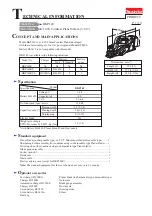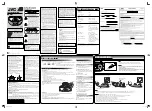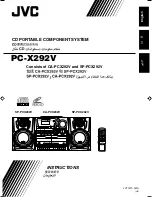
Model G0634Z/G0634XP (Mfd. Since 01/20)
-29-
1.
The operator examines workpiece to make
sure it is safe and suitable for planing.
— If workpiece is bowed, operator surface
planes workpiece on jointer until one side
is flat. Doing so ensures that it sits solidly
on planer table during operation.
2.
Ensures machine is properly set up for plan-
ing operations.
3.
Puts on safety glasses or face shield, a respi-
rator, and ear protection.
4.
Places workpiece on table with flat side
down and correctly adjusts table height for
workpiece thickness and depth of cut.
Note:
Any time you switch directions with the
table height handwheel, there will be a small
amount of backlash—so the first crank of the
handwheel after switching directions will be
slightly less than
1
⁄
16
".
However, as long as
you move the handwheel in the same direc-
tion during operation, backlash will not be a
factor.
Typical Planing Operation
5.
When all safety precautions have been taken,
turns planer
ON
.
6.
Stands to one side of planer path to reduce
risk of kickback injuries, then feeds workpiece
into planer until infeed roller grabs it.
Note: Infeed and outfeed rollers control feed
rate of workpiece as it passes through planer.
Operator does not push or pull on workpiece.
— If cut is too deep and bogs down planer,
operator immediately reduces depth of
cut.
7.
Once workpiece is clear of outfeed roller and
stops moving, operator removes workpiece
from outfeed table and measures workpiece
thickness. If further planing is required, opera-
tor raises table slightly (approximately
1
⁄
4
to
1
⁄
2
turn of the handwheel), then feeds workpiece
into front of planer again.
8.
Operator continues process until desired
thickness is achieved, then turns machine
OFF.
.
Содержание G0634Z insert
Страница 92: ......
















































